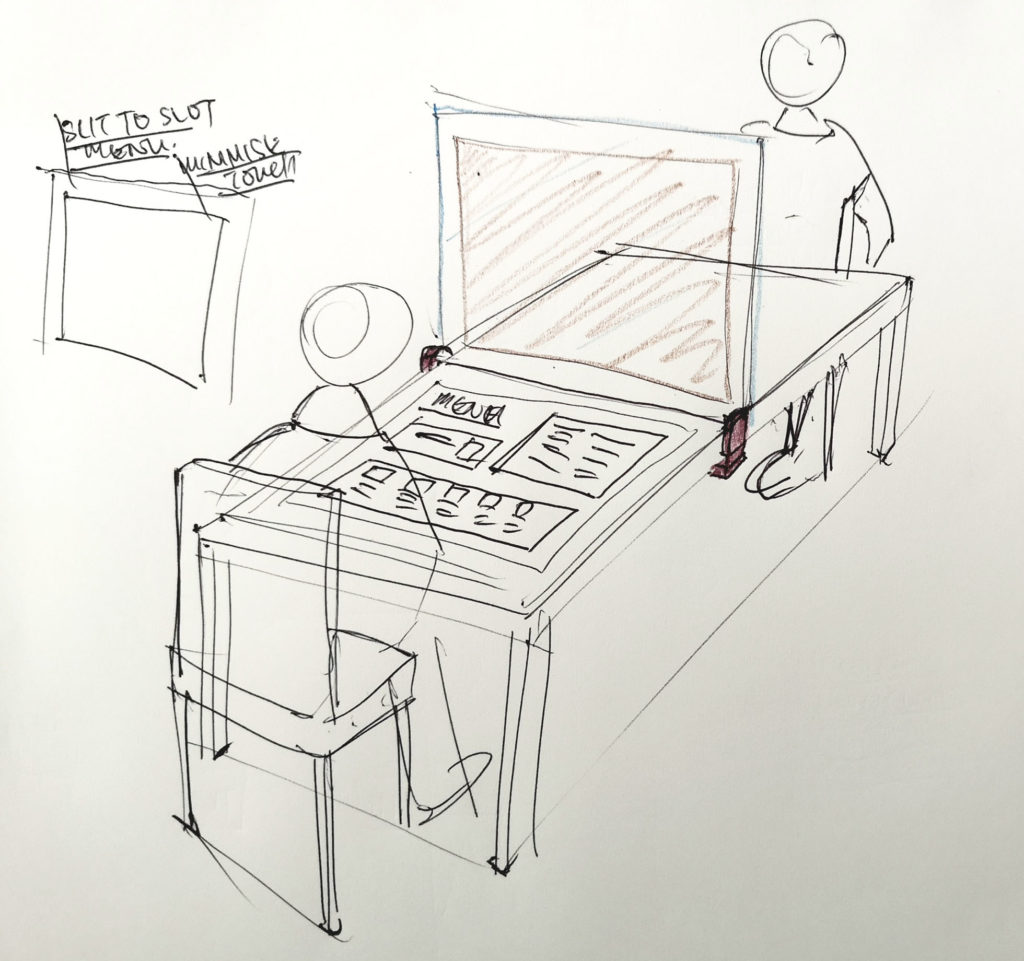
Design Challenge
#3: How might we learn from COVID-19 to reimagine our future for life, work, learning and play?
Project Description
No doubt that COVID-19 impacted business and human behaviours drastically. Personally I think that there are some merits from it, such as increased personal hygiene awareness and social distancing measures that was implemented.
For post-COVID, the question around how can businesses and people keep up with the good habits? I picked the theme of social distancing to explore further and would like to share my concept of a simple product design that can be implemented with minimal disruption and low cost for restaurants/eateries. Product name – Flip, a table divider.
Criteria #1: Value
My assumption is that general public hygiene awareness has been increased during this COVID-19 period. And the expectations of some habits like social distancing might still linger during post-COVID. So how can restaurants solve this issue at the same time optimising “seating capacity”?
Some countries have implemented shields in restaurants and education institution, its seems like a pragmatic and except-able implementation. Therefore, I adopted the shield idea and further conceptualised it into a product that can be attached onto existing restaurant tables and yet serves as a menu holder/slot to minimise contact of passing the menu. It should be easy to attach, customisable with table size and also detachable for though-rough cleaning.
Criteria #2: Inspiration
Inspired by acrylic/corrugated table shields from overseas use cases as well as office cubicle designs.
Design wise, I was inspired by a flipping book, the game Connect Four and plastic folder (those thicker ones where we use it to slot in certs).
I hope to improve current designs merging function of table division with cost efficiency, easy to implement, minimal disruption, purposeful yet maintaining the aesthetics of restaurants.
Criteria #3: Impact
It is suitable even for Post-COVID as diners are mindful of hygiene or some form of social distancing. My concept aims to shield solo diners from strangers sharing the same table, that aims to bring some level of hygiene security to diners customers.
I am also thinking how I can leverage on the divider to encourage some form of interaction with the stranger diner seating opposite.
Criteria #4: Timeliness
This product concept can go into low-fi prototype phase quickly and then testing out with a hi-fi prototype for onsite testing with various eateries. The side mounts can be prototyped using 3-D printing technology with the help of CAD engineer. For the plastic sheets, I will seek suppliers and work on feasibility of mass production and figure out way to customise (perhaps laser cut).
Target to conduct onsite trial in May and production ready from June onwards hopefully in time for end of circuit breaker.
Criteria #5: Systems Thinking
“How might we use this window to encourage businesses to adopt new and innovative ways of operation? How can we introduce relevant design concepts to help businesses reinvent themselves? ” These are great examples of HMW help F&B restaurants to regain customers’ confidence. Possible to work with Restaurant Associations and relevant Government bodies for grants to subsidise some of the implementation cost.
Installation wise, its modular and easy that can be self-installed by restaurant staff.

